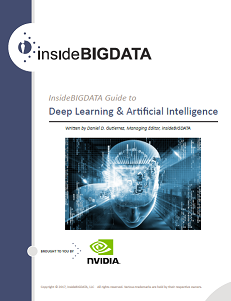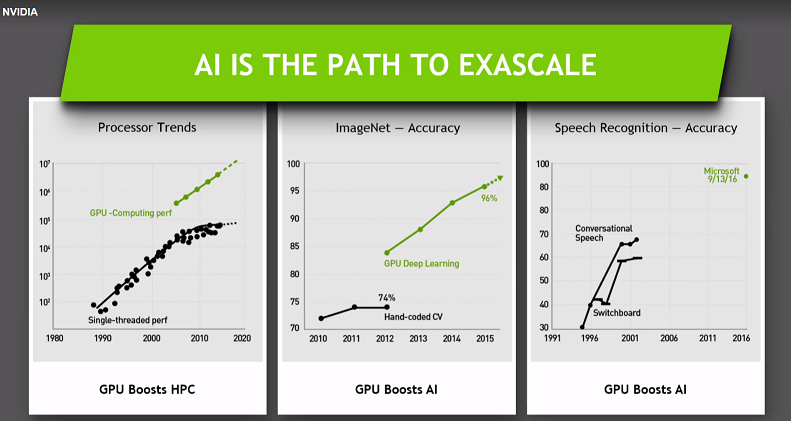The insideBIGDATA Guide to Deep Learning & Artificial Intelligence is a useful new resource directed toward enterprise thought leaders who wish to gain strategic insights into this exciting area of technology. In this guide, we take a high-level view of AI and deep learning in terms of how it’s being used and what technological advances have made it possible. We also explain the difference between AI, machine learning and deep learning, and examine the intersection of AI and HPC. We present the results of a recent insideBIGDATA survey that reflects how well these new technologies are being received. Finally, we take a look at a number of high-profile use case examples showing the effective use of AI in a variety of problem domains. The complete insideBIGDATA Guide to Deep Learning & Artificial Intelligence is available for download from the insideBIGDATA White Paper Library.
 The Intersection of AI and HPC
The Intersection of AI and HPC
The intersection of AI and HPC is showing that cognition can be computable in a practical way for real-world applications. It represents a balance of logic processing with numerically intensive computation. It is an area of intense activity in commercial, industrial, government, and academic research settings. The combination of AI and deep learning algorithms with HPC numerically intensive statistical analysis and optimization profoundly impacts the IT industry to influence every aspect of human life.
Recently, Baidu Chief Scientist Andrew Ng posed the question “Why is HPC speeding up machine learning and deep learning research?” He indicated
that a lot of progress in AI today is driven by empirical work by running experiments. He also points out that HPC is allowing researchers and developers to be more productive by letting them iterate experiments more quickly using the familiar “idea -> experiment (code) -> result (test)” cycle. Instead of weeks, months or even years to complete an experiment, you now can reduce the time to days.
Here are some other observations on the coupling of AI and HPC:
- Computation science and data science are both critical for future HPC. Specifically, AI is the path toward exascale computing (computing systems capable of at least one exaFLOPS). At the SC16 conference, there were numerous examples from a diverse set of domains such as healthcare, weather, astronomy, etc. where AI is being used to solve traditional HPC problems. We’re already seeing ways for deep learning to help HPC solve problems.
- Deep learning is a supercomputing challenge as well as a supercomputing opportunity. In fact, future supercomputers should be designed for both computational science as well as data science. The future of supercomputing will integrate computational science and AI, and that AI supercomputing is our best path forward to exascale computing.
- Once you’ve trained an accurate model, the next step is deployment, or figuring out how to serve large neural networks across a base of users. Many feel that HPC brings the benefits of advanced AI to users at scale.
- An interesting statistic involving the use of AI for speech recognition shows that using 10x more data can lower relative error rates by 40%. HPC allows training models on ever larger data sets, and is therefore a key part of progress in AI.
Not too long ago, HPC was the exclusive domain of companies like Cray and IBM. But earlier this year, at the NVIDIA GPU Technology Conference 2016, NVIDIA CEO Jen-Hsun Huang used his keynote address to introduce the DGX-1, touted as the world’s first “AI supercomputer in a box” costing around $130,000. This launch was groundbreaking for the field of AI.

In the final analysis, the success of organizations to fully capitalize on these technologies may boil down to finding enough skilled workers. Many companies are working to determine how to recruit the right talent and build the right organization to succeed in an AI-driven economy. Maybe some practitioners who grew up doing machine learning didn’t grow up with an HPC background. The solution may be to sit down and learn it yourself, or maybe partner with people that have this skillset.
The complete insideBIGDATA Guide to Deep Learning & Artificial Intelligence is available for download from the insideBIGDATA White Paper Library, courtesy of NVIDIA.




Speak Your Mind